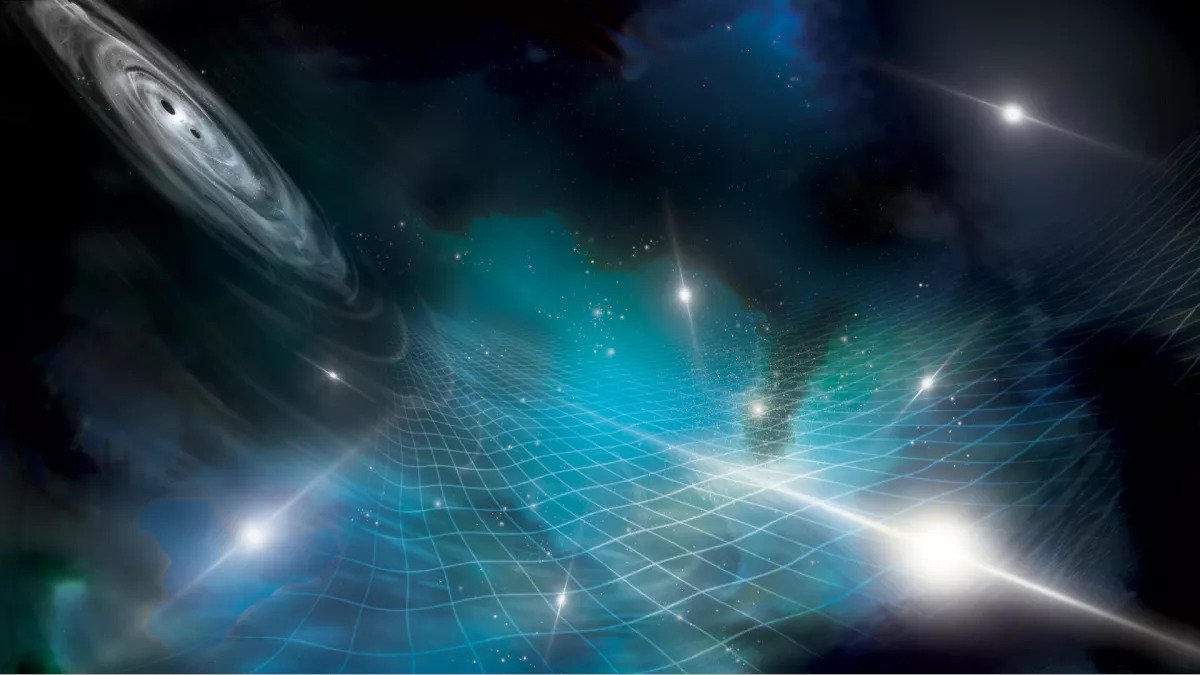A huge number of scientists from different parts of the Earth reported that they were able to prove the existence of background gravitational waves. They come from the merger of supermassive black holes far beyond our perception. It was possible to discover them with the help of millisecond pulsars.

Sensational statement about background gravitational waves
On the evening of June 28, scientists from all over the world synchronously made a statement that the scientific community had been waiting for 10 years. They proved the existence of background gravitational waves. Articles about this have been published by scientists from India, China, Europe and Australia.
Until now, gravitational waves have only been observed from the merging of ordinary black holes. This is a rather infrequent phenomenon in which a wave of curvature of space is formed. They are so weak that they are detected only by special detectors such as LIGO and VIRGO.
However, the theory suggests that gravitational waves should pass through our planet constantly. They are generated by mergers of supermassive black holes. On their own, these events are incredibly rare, but there are a lot of them in space. And even the galaxies in which these black holes are located we do not see, the curvatures of space from them still travel through the Universe indefinitely.
The only problem is that they are extremely weak. It is impossible to notice them by ground means, even by the way the laser beam is deflected at a distance of kilometers. And that is what has prevented the discovery of these fluctuations so far.
How the discovery was made
However, there are radiation sources in space that are much better suited to see even such small fluctuations in space. We are talking about millisecond pulsars. These neutron stars rotate so fast that their poles, from which radiation streams escape, turn to the earth every few milliseconds. And this period has remained virtually unchanged for millennia.
Scientists have long proposed using millisecond pulsars to find background gravitational waves. After all, while the signal from the pulsar is flying to earth, it has been in outer space for thousands of years. And if gravitational waves meet on its way, they change the time of arrival of the signal and we see a violation of the cycle.
It is this phenomenon that scientists have been able to observe. Using various radio telescopes, such as the now-demolished Arecibo Observatory in Puerto Rico, the Green Bank Observatory in West Virginia, the Karl G. Jansky Very Large Array in New Mexico and the Canadian Hydrogen Intensity Mapping Experiment (CHIME), they collected data on the timing of these pulses monthly for 15 years.
The researchers then calculated the difference between the actual arrival time of the pulses and their predicted arrival time — which they could estimate with an accuracy of 1 microsecond, comparable to measuring the distance to the Moon with an accuracy of a thousandth of a millimeter.
After that, scientists again undertook to observe the same pulsars and found deviations in their signals that cannot be explained by gas and dust located in interstellar space. Only background gravitational waves could generate them.
What’s the fuss about?
At first glance, it may seem that this news is not so sensational. However, in fact, the discovery confirms a number of extremely important theories that describe the Universe around us: from the theory of relativity to the theory of the Big Bang.
However, scientists are most interested in the problem of the “final parsec” in this regard. As you know, black holes bend not only space, but also time. Therefore, when two objects from among those that we call supermassive approach at a distance of less than 10 light-years, this curvature becomes so strong that time almost does not freeze.
Therefore, some scientists claim that supermassive black holes never actually merge, because this process has not yet been observed directly. However, all theories of the evolution of the Universe suggest that this must still happen in some way.
The new discovery does not yet give an understanding of how exactly the problem of the “final parsec” is solved. However, there is no doubt that supermassive black holes somehow overcome it now.
According to www.space.com
Follow us on Twitter to get the most interesting space news in time
https://twitter.com/ust_magazine
